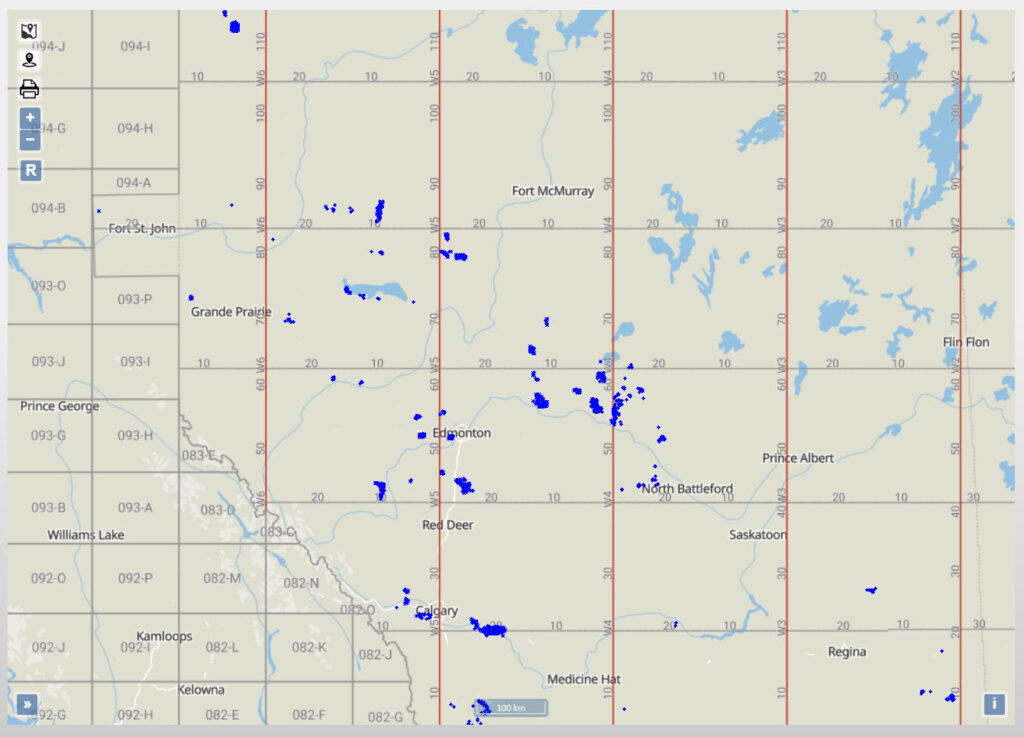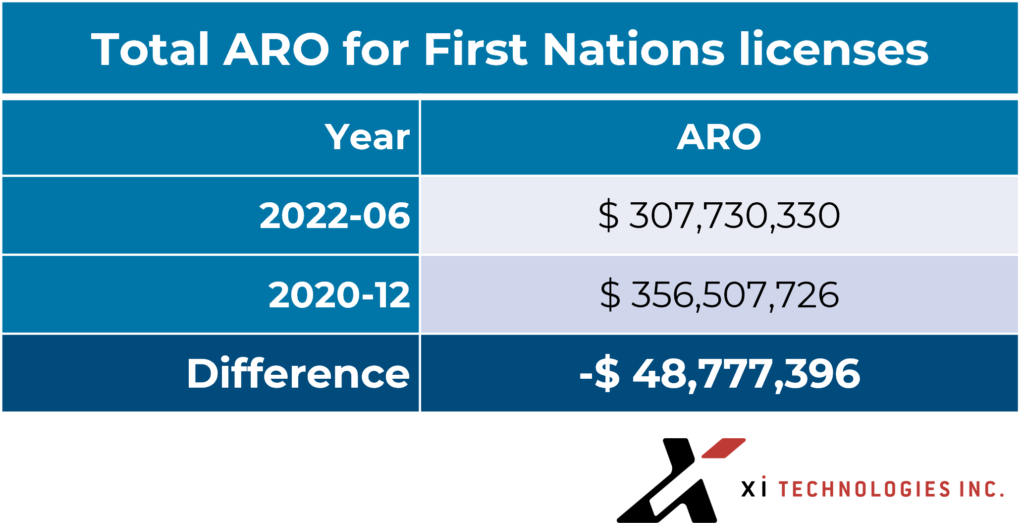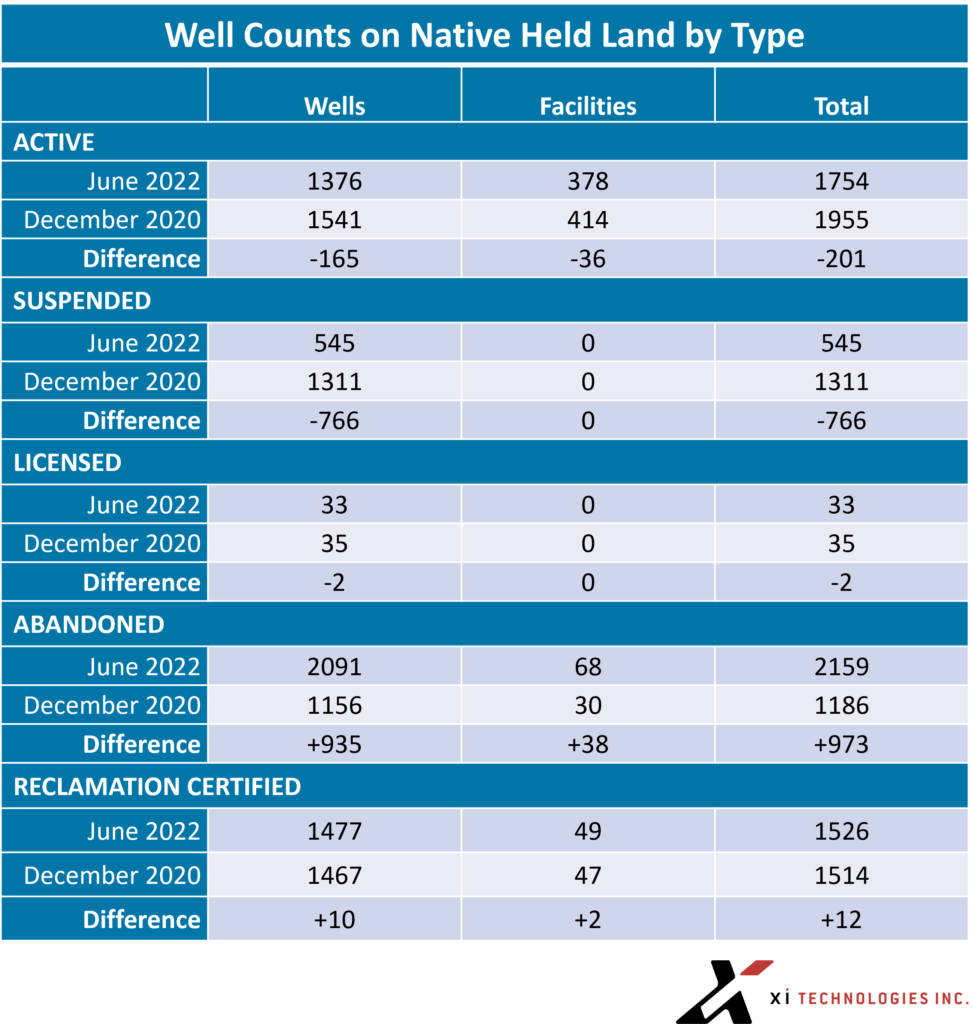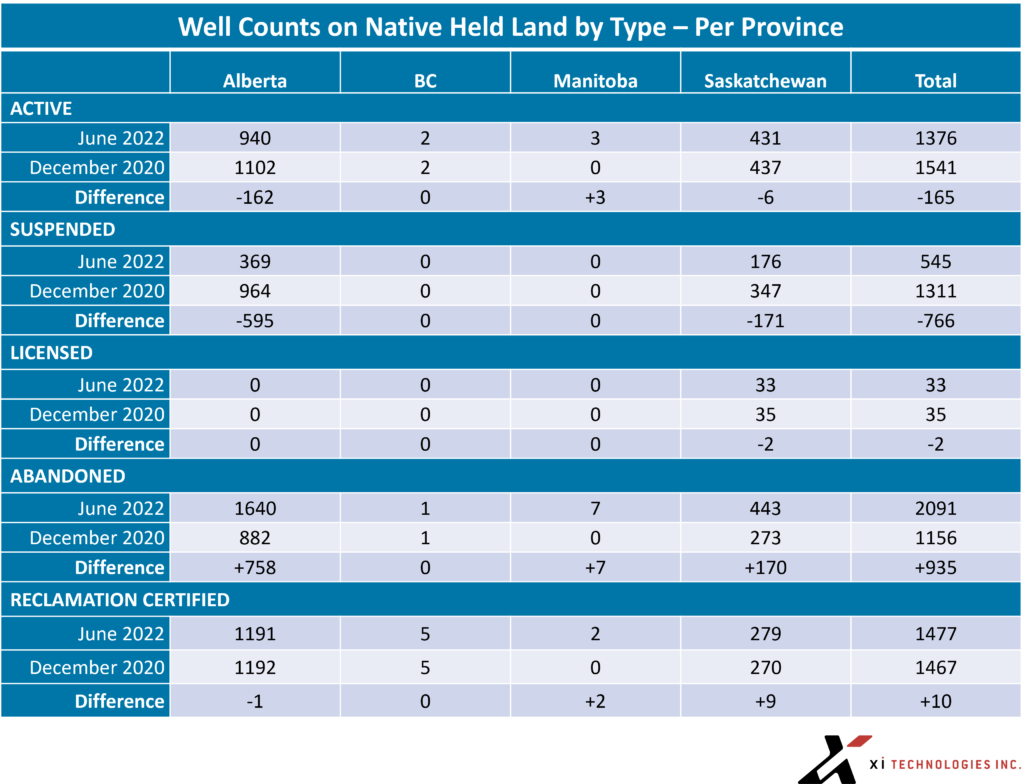Word to the Wise: Examining well closures on First Nations Lands since 2020
September 27, 2022
Each week, XI Technologies scans its unique combination of enhanced industry data to provide trends and insights that have value for professionals doing business in the WCSB. If you’d like to receive our Word to the Wise in your inbox, subscribe here.
In 2020, the Alberta Government introduced the Site Rehabilitation Program, providing grants to oil field service contractors to perform well, pipeline, and oil and gas site closures and reclamation work. The goals for the program were to accelerate site abandonment and reclamation efforts and quickly complete a high volume of environmentally significant work (along with helping the labour force get back to work during the pandemic). This program aligned with Federal funding of up to $1.72 billion distributed to Alberta, BC, Saskatchewan, and Alberta’s Orphan Well Association.
The program had multiple periods, with period 6 allocating $85 million in grant funding to First Nations with an additional $33.33 million in grant funding made available to First Nation communities in January 2022. This led the Indian Resource Council of Canada (IRC) to create the First Nations’ Site Rehabilitation Program (FNSRP), which provided critical technical capacity and support to over 30 Alberta First Nations and their contractors and deployed over $110 million in funding. According to the IRC, the funding addressed over 1,600 sites and resulted in reduced methane gas emissions.
This week, we’ll look at the data provided by AssetBook to examine the difference between First Nations licenses in December 2020 to licenses in June 2022 to examine the potential impact of the FNSRP and other closure work.
This article uses a combination of past work XI has done in conjunction with IRC as well as government-supplied First Nations Reserve information to draw the following conclusions on work done over the past 2 years
There are 2,095 licenses that moved into either abandoned or reclaimed states during the time covered, which amounts to $69 million in LLR calculated spending to deal with those licenses. Using XI’s 2022 ARO Cost Model, which takes into account factors missed by the LLR calculation, the calculated spending is $117.4 million (to learn about some of the differences between LLR and ARO, refer to our case study). With newly added wells factored in, this creates a net reduction in total ARO of $49 million (again using LLR cost calculations). Note: this assumes that the surface reclamation work is done and the location is currently in the monitoring phase.
Digging deeper into the data tells us more about where most closure work on First Nations lands has occurred.
The data shows a large number of wells and facilities being abandoned in this time frame, which is the first step in end-of-life activities with oil and gas licenses. This coincides with a drop in Suspended licenses, suggesting an increase in work done to move those sites from suspended to abandoned. The final phase of site closure is reclamation, a lengthier process that requires certification from the governing bodies of the province in question. Since the end of 2020, a net increase of 12 sites have been issued reclamation certifications.
Breaking the list down by province shows, unsurprisingly, that the lion’s share of closure work was done in Alberta, which also received the largest share of funding. Saskatchewan was second on the list and had the largest net increase in reclamations during the time frame.
The following maps show where reclamations have occurred and where reclamation dollars have been spent during the time period:


This data is an overview comparing site totals and well types from the beginning of the FNSRP to the end of the program. It doesn’t directly tie any particular batch of funding to a specific act of well closure, but when taken as a whole it does seem to back the claim that the program was a successful first step to addressing the issue of well closures on First Nations land.
As stated by IRC President/CEO Stephen Buffalo, “these liabilities are the oil and gas licensees’ legal responsibility, while at the same time, the Government of Canada through its administrative department, Indian Oil and Gas Canada (IOGC) has a fiduciary responsibility to address these historical wells on First Nations Lands… We simply want the Government of Canada to come to the table to work with First Nations and Industry to clean up the remaining lands and return them to their natural state.” The progress made in the 18 months examined here is promising but also shows significant work is still to come.
This data was calculated using XI’s liability software module AssetBook ARO Manager. ARO Manager is the only standardized tool for estimating and monitoring asset retirement obligations in Western Canada’s oil and gas sector. To learn how XI’s ARO Manager can help with the planning and reporting of liability management, visit our website or contact us for a demo.


